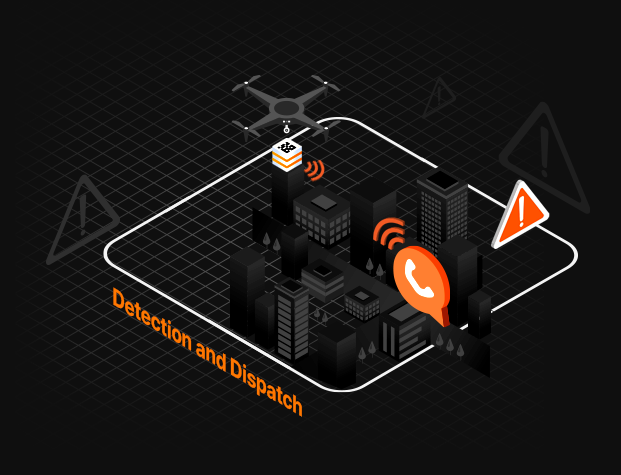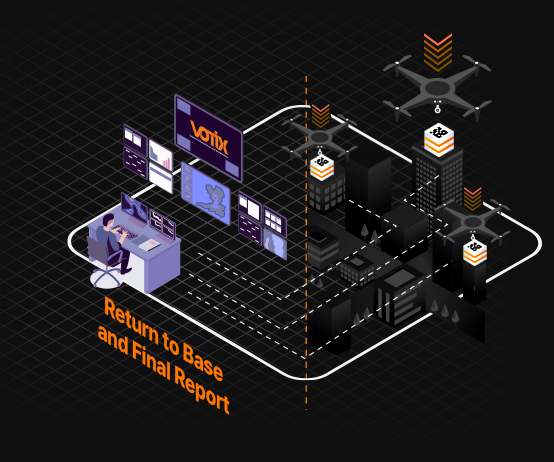5 detailed steps of the DFR process VOTIX

Detection and Dispatch
When an emergency call is received, VOTIX’s DFR system is automatically activated. Based on the location of the incident, the closest drone is prepared for takeoff.
Objective:
Ensure that the drone is dispatched as quickly as possible, before emergency responders even arrive on the scene.

Takeoff and Autonomous Navigation
The drone takes off and begins its journey to the incident location autonomously, using precise coordinates and navigation intelligence to avoid obstacles.
Objective:
Minimize response time, allowing the drone to reach the site quickly by following the most efficient route.

Live Streaming and Real-Time Analysis
As the drone approaches the site, it starts transmitting live video to the command center and response teams. This feed enables operators to assess the situation in real time.
Objective:
Provide an early, detailed view of the scene so teams can plan and adjust their approach more safely and effectively.

Monitoring and Support for Field Teams
The drone hovers over the area, providing continuous monitoring as field teams arrive and begin operations. It can help guide officers, offer additional viewpoints, and monitor perimeter movements.
Objective:
Deliver full visual support to keep teams safe and provide constant updates on the scene.

Return to Base and Final Report
Once the operation is complete, the drone automatically returns to base to recharge and be ready for the next mission. Captured images and data are saved to generate a detailed operation report.
Objective:
Document the operation for review and analysis, helping to improve future responses and ensure system readiness.

